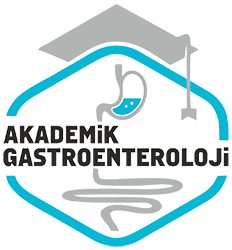Kolonoskopik lezyonlar ve histopatolojik sonuçlari: 322 hastanin değerlendirmesi
Colonoscopic lesions and results of histopathology: Evaluation of 322 patients
- Ana Sayfa
- Sayılar
- Kolonoskopik lezyonlar ve histopatolojik sonuçlari: 322 hastanin değerlendirmesi...
Özet
Giriş ve amaç: Biyopsi ve polipektomiyi de içeren fleksibl fiberoptik kolonoskopi, birçok gastrointestinal bozuklukta önemli bir tanı ve tedavi aracidir. Bunun yaninda, dogru tanı için çekuma ulasabilme tamamlayi ci bir faktördür. Bu araştırmanin amacı merkezimizdeki genis bir seri ile kolonoskopik islem ve histopatolojik bulgu sonuçlarını sunmaktir. Gereç ve yöntem: Dicle Üniversitesi Gastroenteroloji Klinigi Endoskopi Merkezi’nde Ocak 2003 ile Mayis 2006 tarihleri arasında kolonoskopi yapılan ve yaşlari 16 ile 81 arasında degisen 322 (141 kadın, 181 erkek) hasta retrospektif olarak değerlendirildi. Demografik veriler ve koloskopi ve lezyonlarin histopatolojik sonuçları kaydedildi. Basari orani çekuma ulasabilme olarak tanımlandi. Bulgular: Üç buçuk yılda toplam çekuma ulasma basari orani %78 idi ve bu oran çalışma periyodu boyunca artarak en yüksek orana son çalışma yılinda (%86.7) ulasmıştır. Tüm Hastaların %49.7’inde normal bulgular vardı. En sık karsilasilan lezyonlar hemoroidler, polipler, ülser ve kitleler idi. En sık kitle histopatolojisi adenokarsinom, ülser histopatolojisi ülseratif kolit ve polip histopatolojisi ise hiperplastik ve adenomatöz polip olmuştur. Bu seride bir hastada perforasyon gelisirken, ölüm ile karsilasilmamıştır. Sonuç: Analizimiz geçerli kilavuzlara yakin çekuma ulasma ve dökümantasyon oranlari ortaya koymustur. Daha iyi bir basari için yeni teknolojik ürünle ihtiyaç vardır.
Abstract
Background/aim: Flexible fiberoptic colonoscopy, including biopsy and polypectomy, is an important diagnostic and therapeutic instrument in many indications of gastrointestinal disorders. Furthermore, cecal intubation is a complementary factor in an accurate diagnosis. The purpose of this research was to present a large case series of colonoscopic procedures and histopathological findings in our center. Materials and methods: A total of 322 patients (141 female, 181 male) between 16 and 81 years of age who underwent colonoscopy in the endoscopy center of Dicle University Gastroenterology Clinic from January 2003 to May 2006 were reviewed retrospectively. Demographic data and colonoscopic and histopathologic findings of the lesions were recorded. The success rate was defined as intubating proximal to the initial area of impasse and entering the cecum. Results: The overall adjusted cecal intubation rate for the entire 3.5 years was 78%, and increased over the study period, with the highest adjusted rate (86.7%) in the most recent year studied. Of all patients, 49.7% had normal findings. The most frequently encountered lesions were hemorrhoids, polyps, ulcers and masses. The most common mass histopathology was compatible with adenocarcinoma, ulcer histopathology with ulcerative colitis and polyp histopathology with hyperplastic and adenoma. One perforation was observed in this series, but no mortality occurred. Conclusions: Our analysis revealed approximate cecal intubation and documentation rates that meet current guidelines. To achieve better results, new technological devices are necessary.



